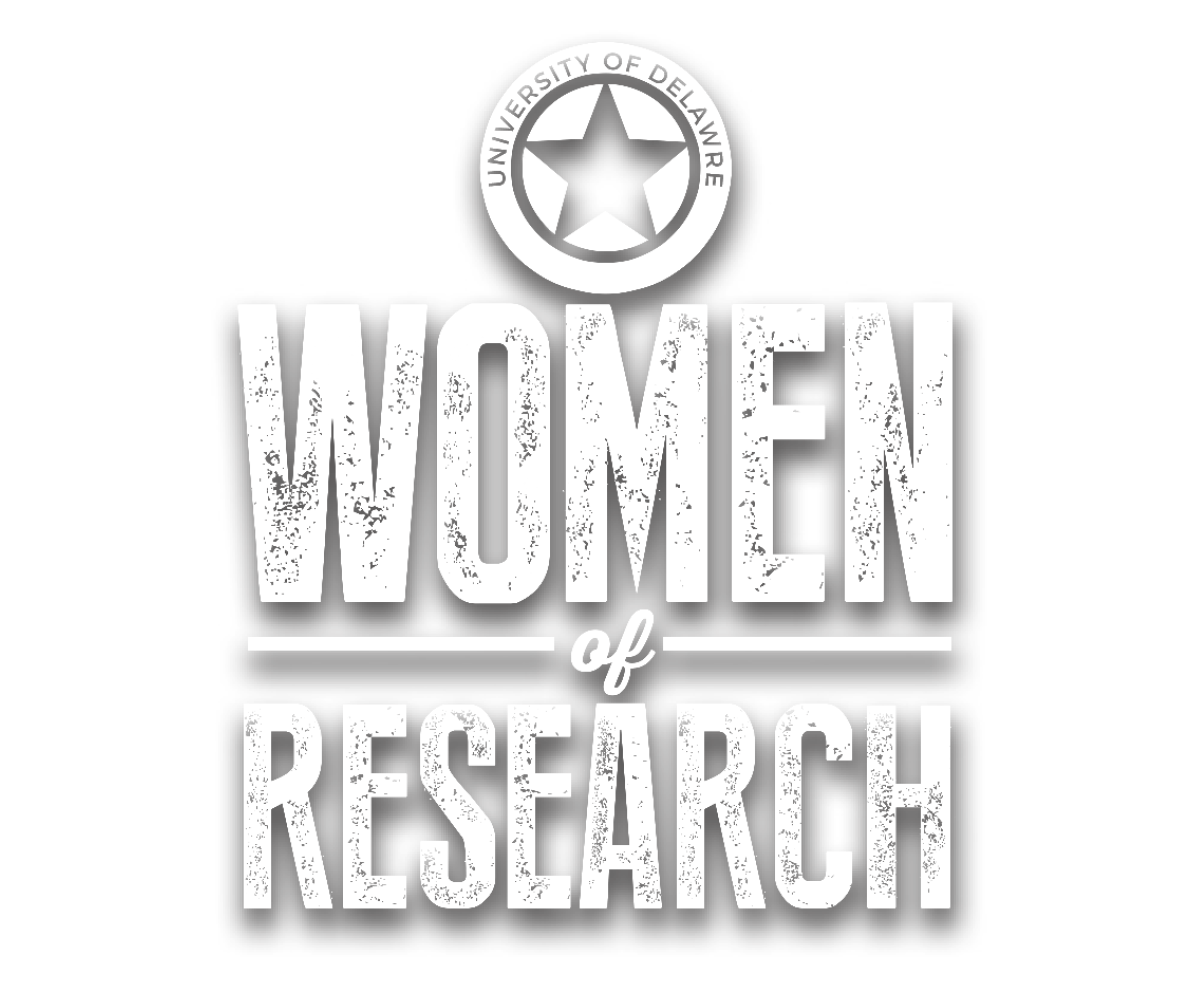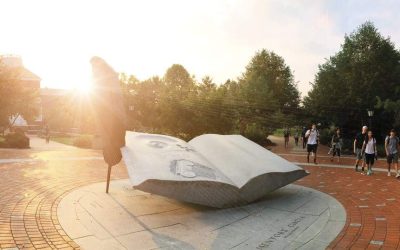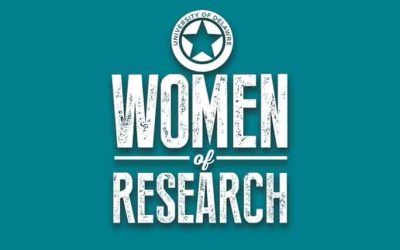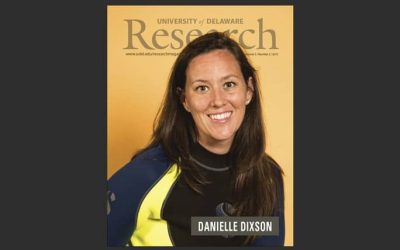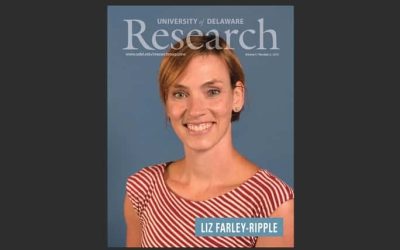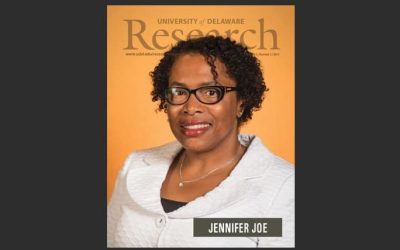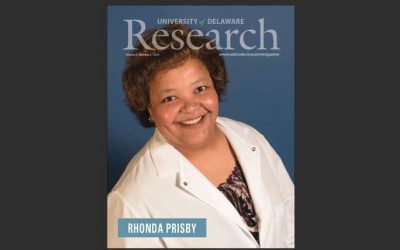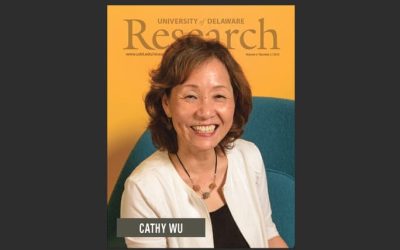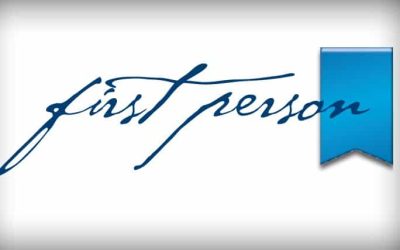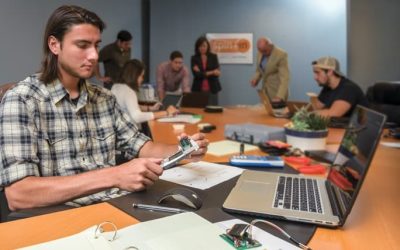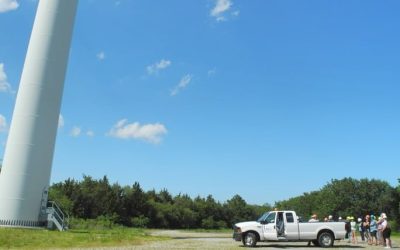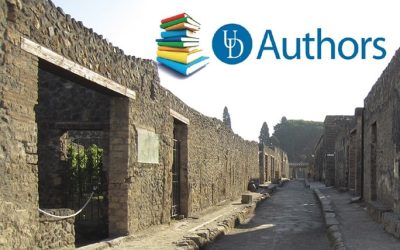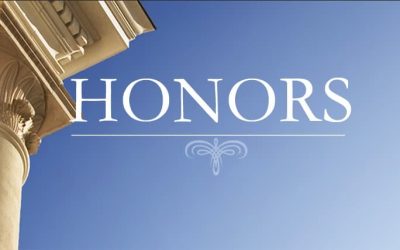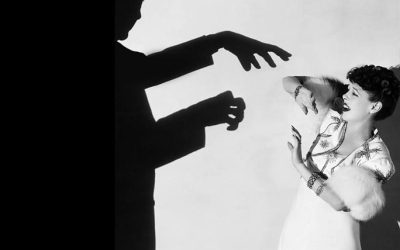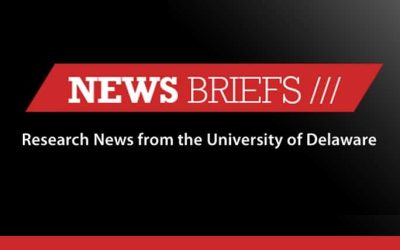
Seyfferth’s research at UD focuses on arsenic in rice, a topic for which she received a prestigious Faculty Early Career Development Award from the National Science Foundation. It recognizes faculty who exemplify the role of teacher-scholars through outstanding research, excellent education and the integration of education and research within their organizations.
That funding award led to the installation of the first experimental rice paddies in Delaware, which are being used to aid Seyfferth’s research on potential methods to lower arsenic levels in rice—a staple crop for nearly half the people on Earth—as well as allow her to use the paddies as a teaching tool for UD graduate, undergraduate and local high school and middle school students.
Seyfferth says she enjoys knowing the research she is conducting has the potential to impact society. She also loves passing that knowledge on to new students.
“Both of those things really drive me on a daily basis,” says Seyfferth. “I get to work with students and get them excited about research. I enjoy getting young people involved in research at an early age because it was so critical for me to get to where I am today.”
Seyfferth credits her early career success to working with excellent students, having a strong lab group and support from faculty in her department and across the University.
She says that time management skills also have been important, as well as having support from her family.
“As a woman researcher, my partner is also a researcher and so sharing that responsibility makes it possible. That’s one thing that I try to portray to my students—especially the female students—is that you can have a family and a successful career without having to sacrifice them as long as you have the right support network,” Seyfferth says.
Seyfferth also notes that UD’s family friendly policies helped her when she gave birth to a son in the middle of her tenure process.
“UD has a very family friendly policy to allow for a delay in the tenure clock. As a tenure track professor, you have a certain amount of time to submit your dossier for tenure and if you have a child in that period, UD’s policy is you can opt for another year extension and so that’s been really helpful for me,” Seyfferth says.

TRUE INSPIRATION
The chance to make a difference in the world and to ignite a love of research in her students inspires Angelia Seyfferth’s work. She is studying ways to lower arsenic levels in rice, a prime source of food around the world.
In 2013, 24.3% of full professors in science, engineering and health in the U.S. were women. — National Science Foundation
MORE STORIES
ADVANCE-ing UD
Seven faculty members are highlighted in this issue of UD Research. Indeed, there are commonalities among them—a steadfast commitment to excellence, unrelenting intellectual curiosity, mentors and role models who inspire, and a disdain for the status quo. I encourage you to read their stories to learn about their inspirations, the challenges they have faced and the scope and quality of their scholarly endeavors.
Women of Research
Extraordinary research is underway at the University of Delaware, and women are all over it. We profile seven researchers who offer insight into their work—from coral reefs to corporations—what hurdles they have cleared and what keeps them moving forward.
Danielle Dixson
A chance encounter with a tour guide at the Shedd Aquarium in Chicago is what sparked Minnesota native Danielle Dixson’s interest in marine biology. “I was 5 years old and the guide gave me a book for asking a clever question about whales,” she says.
Liz Farley-Ripple
Elizabeth Farley-Ripple did not set out to become an education researcher. As an undergraduate at Georgetown University, she started out majoring in Latin American Studies. Then came Professor Bill McDonald’s sociology course focusing on research methods. “I had an aha moment,” says Farley-Ripple. “I realized I could have an impact—and actually apply the ideas I had been reading about.”
Jennifer Joe
Jennifer Joe, the Whitney Family Professor of Accounting in the Alfred Lerner College of Business and Economics, attributes positive experiences with her professors in college as the impetus for her pursuit of an academic career.
Rhonda Prisby
Rhonda Prisby had a plan for her master’s degree in exercise physiology. She expected to work in a cardiac rehabilitation clinic. Then a professor mentioned something she hadn’t considered—her potential as a researcher.
Margaret Stetz
As a scholar with diverse interests from 19th-century British literature to military history and fashion studies, and who shares her work in a variety of academic and community forums, Margaret D. Stetz might be expected to have difficulty summarizing what she does.
Cathy Wu
For Cathy Wu, becoming a bioinformatics expert was kind of accidental. Armed with a Ph.D. in plant pathology and a postdoc in molecular biology, she followed her husband on a job move to Tyler, Texas, in the mid-1980s, but was unable to land a good faculty position there.
Never underestimate the power of good mentoring
A few years ago, a newly hired female faculty member had the following experience: A male colleague responded to her hallway greeting by saying hello and adding, “I hope everyone is making you feel welcome.”
Spin in spins out innovation
The University of Delaware’s “Spin In” program, founded, managed and trademarked by the Office of Economic Innovation and Partnerships, connects University undergraduate students with community entrepreneurs and early-stage startups to give them an inside look at business innovation in action and a chance to apply what they’re learning in real-life situations.
Making it clear
For the past three years, almost 90 educators from around Delaware and Maryland have been working with scientists and environmental experts from the University of Delaware and the University of Maryland. The goal is to develop a richer understanding of climate change and build effective activities and instruction plans to help their students understand the data and find potential solutions.
Solar Strong
The vast majority of the sun’s extraordinary power remains out of reach—absorbed, deflected or otherwise inaccessible to today’s power-hungry masses—but University of Delaware researchers continue their quest to capture more, store more and deploy it more efficiently.
Slaves’ lives emerge from ancient ruins
“Detfri slave of Herennius Sattius” and “Amica slave of Herennius” reads the terra-cotta tile. It was discovered atop the ancient temple in Pietrabbondante, a town tucked into the bare rock and evergreen-covered mountains more than 100 miles east of Rome.
Honors
• Dugan named Truman Scholar
• Overby elected to board of Oak Ridge consortium
• Backbone of the profession
Fearsome Fridays
Tom Fernsler, “Dr. 13,” now retired from the Delaware Center for Teacher Education, knows a lot about Friday the 13th. Do you? Take our quiz and find out!
News Briefs
• Changing the color of light
• What’s it really mean if a CEO is greedy?
• Research All-Stars field new findings




